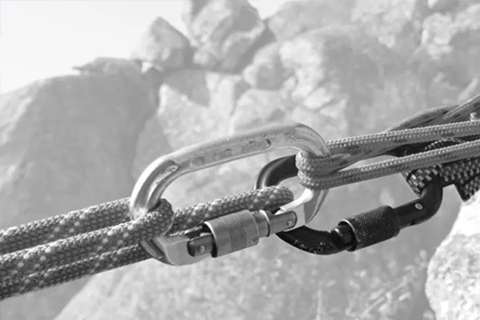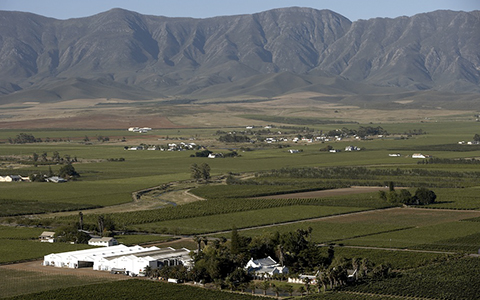-
 传承宝典——持有一流企业何以抵御市场波动
传承宝典——持有一流企业何以抵御市场波动
传承宝典|持有一流企业何以抵御市场波动 导读 Stonehage Fleming投资管理公司全球股票管理主管格利特·斯密特(Gerrit Smit)认为,在市场剧烈波动期间,优质公司可以通过多种方式为投资者提供保护。投资者应选择那些管理层素质高、能驾驭风暴的公司。 本文内容由雷梭勒家族办公室根据Stonehage Fleming文章编译整理,版权归原作者所有。 过去三年里,世界经历了各种冲击,包括全球疫情、严重而广泛的供应链中断、乌克兰战争、能源危机和银行业的混乱。去年,美联储为了控制通胀而大举提升目标利率,这对投资者而言尤为残酷。标准普尔500指数遭遇了自2008年以来最严重的损失,2022年年终收盘同比跌幅达19.4%(资料来源:路透社)。 “尽管最近出现了冲击和长期波动,但我们仍有充分的理由保持建设性态度,”格利特在上周的一次投资推介会上对来宾说。“我们的做法不是针对特定的短周期不断调整投资组合,而是持有对的企业。这样,当不可预见的情况或事件发生时,我们就不会陷入担心所持资产的困境。” 作为Stonehage Fleming全球最佳理念股票基金经理,格利特概述了该基金的投资理念——让团队根据四大战略标准识别优质企业:可持续的内生增长、效率、自由现金流的产生和优质管理。他强调,这些标准对于确保可持续增长尤为重要,因而可以在市场不确定和波动加剧的时期为投资者提供信心。 “我们得到何种程度的保护取决于所持有的这些企业的品质和可持续性。这些企业有能力在意外事件发生后恢复。这种情况屡次发生,去年之后也是如此。” 格利特强调,在地缘政治不确定性持续存在的情况下,优质企业的投资者不应该对结果进行猜测或作出反应。他再次强调,最好的防御是持有具备这些基础支柱品质的企业,尤其是拥有一支优秀的高管团队的企业。 “我们的投资方式非常全球化,这意味着我们购买的都是一流的企业,而且这些企业本身也是全球多元化的。我们寻找拥有持续成功的记录、强有力的战略和清晰的企业可持续发展文化的一流管理团队。我们相信他们不仅能发现任何可能出现的机会,还能了解他们所面临的地缘政治压力。” 格利特解释说,确信有一支高素质的管理团队是制定正确行动方案的关键。“对于不同国家的不同风险,我们有很多不确定性和保留意见,因此很难明确想要了解的一切。风险最低的方法是寻找最优质的企业,在这些企业中,你可以相信管理层会收集必要的信息并做出正确的战略决策。” Original English Text How holding best in class companies can offer defence against volatility – Gerrit Smit Choose companies whose quality management will steer a course through storms There are several ways that quality companies can provide shelter for investors during periods of elevated volatility, according to Gerrit Smit, Head of Global Equity Management atStonehage Fleming Investment Management. Over the last three years, the world has experienced its fair share of shocks, including a global pandemic, severe and widespread supply chain disruption, war in Ukraine, an energy crisis and disruption in the banking sector. Last year was particularly brutal for investors when the Fed raised their target rate aggressively to bring inflation under control. The S&P 500 suffered its worst losses since 2008, closing 2022 down 19.4% on the previous year (Source: Reuters). “Despite recent shocks and periods of extended volatility, there are good reasons to remain constructive”, Gerrit told guests at an investment presentation last week. “It not our approach to try to constantly reposition our portfolio for particular short-term cycles but rather to own the right businesses. That way, when that unforeseen circumstance or event occurs, we shouldn’t be in the difficult position of fearing what we hold”. Manager of the Stonehage Fleming Global Best Ideas Equity Fund, Gerrit outlined how the fund’s investment philosophy enables the team to identify quality businesses according to four main strategic criteria: sustainable organic growth, efficiency, free cash flow generation and quality management. He highlighted the importance of these in the context of ensuring sustainable growth and thereby providing investors with confidence during times of uncertainty and increased market volatility. “The protection we have is down to the quality and sustainability of the businesses. These businesses are capable of recovery after unforeseen events. That has occurred time and again and it happened again after last year.” With ongoing geopolitical uncertainty, Gerrit stressed that investors in quality companies should not have to second-guess outcomes or respond to them. He re-emphasised that the best defence is to own businesses that possess those fundamental pillars of quality, particularly having a superior management team at the helm. “We have a very global approach to investing which means that we buy best-in-class business that themselves are globally diversified. We look for top class management teams with records of consistent success, strong strategy and a clear business sustainability culture. We trust them not only to identify opportunities wherever they may be but also to understand the geopolitical pressures they are under.” High conviction of a quality management team is key in bearing out the right course of action, explained Gerrit. “We all have many uncertainties and reservations about different risks in different countries and find it difficult to get clarity on everything we would like to. The lowest risk approach is to identify best quality businesses where you trust management to gather the necessary information and make the right strategic decisions.” 本文转载自瑞士雷梭勒家族办公室,如有侵权,敬请告知删除。 Sooswiss为您提供 瑞士方向私人管家式的定制服务: 1)家族传承 2)财富管理 3)投资咨询 4)企业服务 5)居留计划 6)国际教育 更多资讯请登录网站 www.sooswiss.com
-
 传承宝典——家族的全面风险管理
传承宝典——家族的全面风险管理
传承宝典|家族的全面风险管理 导读 今天的超高净值家族面临着一个日益复杂、处处暗藏风险的世界。本文提出,对待风险,包括那些不太明显的风险和非财务风险,要采取一种更为广泛的管理方法,从而有效弥合家族成员之间的理解分歧,避免更大的风险发生。本文内容由雷梭勒家族办公室根据Stonehage Fleming文章编译整理,版权归原作者所有。 过去20年来,推动财富管理行业增长的,是对客户承诺的一种新的、全面的战略方法。而这一主张的核心,是更为智能的风险管理。 一些富有创意的个人和机构为了发挥竞争优势,设计了许多新型风险管理工具。尽管其中有一些工具构思巧妙且有实用价值,但总体结果令人失望,因为多数这类创新产品仍停留在对投资组合波动性的关注上,却没有去处理那些影响家族财富的更广泛的风险: 对许多客户而言,投资组合仅占家族财富的一部分。因此,如果未充分考虑家族更广泛的商业利益及其他资产,风险评估都是不完整的。 投资界传统上主要是根据波动性应对风险,却忽略了一个事实:从家族的视角和更长远的考虑,看待投资风险有很多其他方式。 未考虑到无形的和无法衡量的风险,许多研究表明这些风险是家族财富损失的主要原因(参见图A和图B)。 现实情况是,今天的超高净值家族面临着一个日益复杂、处处暗藏风险的世界。本文提出,对待风险,包括那些不太明显的风险和非财务风险,要采取一种更为广泛的管理方法。它不像那些确立已久的研究方法那样具有充分的科学和学术依据,而是主要基于逻辑严谨的常识判断,以及一个简单的、确保所有风险都在其特定条件下得到处理的程序。 风险敞口接下来不可避免的问题是,如何定义风险,以及如何识别和优先处理关键的风险敞口。对这个问题没有唯一正确的处理方法,而是取决于你的视角。对投资组合经理而言,合理的方式是主要关注投资组合的风险,并通过分散投资来实施风险管控。而相比之下,客户往往是企业家,他们通常集中投资于自己熟悉的少数几个领域来管理风险。 对于财富经理而言,在获得充分授权的情况下,进行风险分析首先需要了解家族的财富目标。如果程序中忽略了这一基础步骤,后续的所有考虑规划都是空中楼阁。 事实上,Stonehage Fleming最近的一份研究《二十一世纪资本的四大支柱》* 发现,大量家族一致认为,为自己的财富确定一个明确的目标,是代际财富传承的关键一步。 当然,挑战在于,每个家族的具体目标各有不同。不过,我们可以列出如下可能存在的目标层次: 提供资金,以保证家族成员一定的生活品质 维持一家成功的家族企业,为社会提供大量就业并作出贡献 保持并增加家族整体财富价值 维护家族团结,防止纠纷 提供一项基金,让家族成员能够进行创业投资或从事其他营利业务 提供一项基金用于慈善事业,家族成员可以自由选择是否参与 设立并维持长久的家族传承 财务风险和非财务风险财务风险包括导致绝对损失、未能达成目标值或低于最低基准值的可能情况。而对许多超高净值家族而言,财富(即使全部财富的一大部分)发生绝对损失可能并不会对其生活品质带来严重损害,甚至不会对其实现主要目标的能力产生大的影响。 非财务风险可能包括对家族声誉的损害、重大家族纠纷、家族价值观和工作伦理的丧失,或家族传承的破坏。在很多层面,非财务风险更为重要。例如,与投资组合中的任何资产错配或未能保有有形资产相比,家族纠纷或缺乏家族领导力更有可能对财富造成重大破坏 。 当纯粹的财务风险模型提出,一家成功的家族企业需要分散持股时,继续拥有这家企业所带来的“非财务”收益是很难定价的。同样,家族团结和治理透明所带来的收益也难以量化。 然而,只要是对家族财富的长期威胁进行分析,就需要考虑这一事实:大多数的家族财富会在三代之内消散,而大量研究表明,给财富带来破坏的主要是那些经常被忽略的、无法衡量的风险。 令人惊讶的是,许多家族仍然将投资风险视为主要风险敞口,尽管很少有家族纯粹因为投资管理不善而失去财富(图A)。 *《二十一世纪资本的四大支柱,代际成功的财富策略》,2015 图A:家族认识到的各类风险 (资料来源:家族办公室交流,2014) 另一方面,事后对财富严重缩水的家族进行的研究表明,造成这种财富缩水的最常见原因是沟通不畅、家族动力不足以及没有为下一代做好准备(图B)。 图B:家族实际面临的各种风险 (资料来源:《准备接班人:家族财富和价值观成功传承的五个步骤》, Williams & Pressier, 2003) 当然,并非所有风险都能避免,但有条理的战略方法至少有助于降低风险,增加财富成功代代相传的可能性。 风险图谱分析此家族风险管理方法可为家族带来一套分析和控制系统,它类似于企业和其他商业组织通常使用的风险管理流程。在某些方面,家族甚至比企业更需要这种程序上的约束,这是因为情感因素很容易导致重要问题的回避。 家族风险管理策略的制定应系统化,并考虑到财务风险和非财务风险:培养对潜在风险领域的认识能力和理解能力 了解每种风险对家族财富和家族本身的潜在影响 根据认识到的重要性、确定性和普遍性对风险进行排序 考虑到实际的风险与认识到的风险之间存在差异的可能性 针对每个主要风险点制定并实施风险缓解计划 将可量化的单个风险与不可量化和更普遍的风险区分开来可能有用。因此,可将某个风险划入下方的风险全域图所示的四象限之一: (资料来源:Stonehage Fleming, 2016) 以这种方式评估家族的风险环境,可对单个风险的处理方法产生相当大的影响:1.这种程序上的约束可确保所有风险都得到考虑而无一遗漏2.对风险进行了优先级排序,因此关注点会集中在潜在影响最大的风险上3.更具体地定义了风险,这有助于提出潜在的风险缓解措施4.它可以推动记录风险缓解计划5.它有助于确定可一起管理而不是单独管理的各个风险组 6.也许最重要的是,由于家庭成员之间对风险的理解可能有很大差异,这项工作有助于弥合这些差异,并制定统一的整体性方法 由此可对家族的风险环境形成智能评估,从而制定风险缓解计划,记录风险、概率、影响和缓解措施。 风险缓解计划最好是通过与家庭成员共同制定以获取其认同。应以动态视角看待该计划,并定期展开审查。 这种方法有助于将投资风险偏好、资产分配和可接受的投资时间跨度进行细化完善。 结论 我们认为,很多家族和他们的顾问主要关注的是那些有现成解决方案的有形风险,却没有关注那些更加复杂、更难衡量的无形风险,而这些风险往往导致家族财富损失惨重。 我们相信,这样的一套程序将带来更加全面、有效的方法,从而有助于保护家族财富和几代人的家庭幸福。也许最重要的是,它将有助于弥合家族成员之间的理解分歧,从而帮助避免更大的风险发生。 Original English Text Holistic Risk Management for Families The growth of the wealth management sector over the last 20 years has been fuelled by the promise to clients of a new, holistic and strategic approach. At the heart of the proposition is more intelligent risk management. Many new risk management tools have been devised by innovative individuals and institutions, seeking to develop a competitive edge. Useful and ingenious though some of these tools are, the overall result is disappointing, in that most of the innovation has remained narrowly focused on the volatility of investment portfolios, without addressing the broader risks affecting family wealth: For many clients, the investment portfolio represents only part of the family wealth. Any risk appraisal which does not take full account of wider business interests, and other assets is therefore incomplete. The investment industry’s conventional approach to risk is mainly based on volatility and ignores the fact that there are many other ways of looking at investment risk, from the perspective of the family and taking into account a longer term horizon. No account is taken of the intangible and unmeasurable risks, which numerous studies suggest are the main causes of family wealth destruction (refer Chart A and Chart B). The reality is that today’s families face an increasingly complex world of potential risks. This paper suggests a broader approach to risk management, which includes those less tangible and non-financial exposures. It is not as scientific or academically well founded as established methodologies, but is essentially based on well-structured common sense combined with a simple process, which ensures all risks are addressed in their proper context. The Risk Exposure The inevitable follow-on question is how to define risk and to identify and prioritise key risk exposures. There is no single correct approach to this question as it depends on one’s perspective. For a portfolio manager it is legitimate to focus primarily on the risk of the investment portfolio and to manage that risk by diversifying across a range of investments. By contrast, however, the clients are frequently entrepreneurs, who often manage risk by concentrating their investments in a few sectors which they know and understand. For the wealth manager, with a broad mandate, an analysis of risk requires an understanding of the family’s wealth objectives. If this basic foundation is omitted from the process, the result is that all subsequent considerations and planning are conducted in a vacuum. Indeed, a recent study by Stonehage Fleming, “Four Pillars of Capital for the Twenty First Century”* found wide agreement among families that defining a clear purpose for their wealth is a crucial step for wealth preservation across generations. The challenge, of course, is that no two family’s objectives will be the same. However, a potential hierarchy of objectives might be as follows:To provide financially to ensure appropriate living standards for family members To maintain a successful family business which provides significant employment and makes a contribution to the communityTo maintain and grow the value of the overall family wealthTo preserve family unity and prevent disputeTo provide a fund which enables family members to make entrepreneurial investments or to pursue other beneficial activitiesTo provide a fund for philanthropic causes, which may or may not involve family membersTo establish and uphold a lasting family legacy FINANCIAL AND NON-FINANCIAL RISK Financial risks include the possibility of an absolute loss, a failure to meet objectives or falling below minimum benchmarks. For many ultra-high net worth families, however, an absolute loss of wealth (even if a significant percentage of the whole) may not seriously damage lifestyles, nor even drastically impact on their ability to fulfil their main objectives. Non-Financial risks, could include damage to the family reputation, a major family dispute, loss of family values and work ethic, or the destruction of a family legacy. In many senses the non-financial risks are the more important. For instance, a family dispute or lack of family leadership is far more likely to lead to a major destruction of financial wealth than any asset allocation mistakes in the investment portfolio, or the failure to insure a tangible asset. It is also extremely difficult to put a price on the ‘non-financial’ benefits a...
-
 传承宝典——富不过三代? 对一句古老谚语的新看法
传承宝典——富不过三代? 对一句古老谚语的新看法
传承宝典|富不过三代? 对一句古老谚语的新看法 导读 “富不过三代”这句谚语,形容的是家族事业无法长久传承的现象。本文采用了代际风险偏好匹配的新视角来探索这道家族传承难题,并试图从家族沟通、治理和教育计划等方面提供解决方案,帮助家族成员找到风险“联动点”,为下一代赋能,推动企业向前发展。本文由雷梭勒家族办公室根据Stonehage Fleming文章编译整理,版权归原作者所有。 富不过三代 你可能听说过这样一句谚语:“富不过三代”(译者注:原文为 from shirtsleeves to shirtsleeves in three generations,即“三代人的起点是穿袖衫,终点又回到了穿袖衫”。在二十世纪初期的美国,穿着长袖工装的都是典型的工人阶级)。这指的是,家族企业的第三代往往发现,要坚持父母和祖父母传给他们的事业是很有挑战性的。 下一代无法有效传承,并不总是因为他们缺乏意愿或才能。在许多情况下,失败可能归因于两代人之间的风险偏好不匹配。不同的风险偏好会产生冲突,不过这其中有一个“联动点”,可以让一代人的“保护模式”与另一代人的“风险承担模式”在此相遇,积聚恰到好处的内在力量,从而有的放矢地推动企业向前发展。至关重要的是,找到这个联动点有赖于良好的沟通和管理,并确保第三代有参与的意愿和愿望。 尽管不同的家族企业情况各异,创业的时机也不相同,但许多家族企业也存在一些共性。 通常情况下,第一代企业家往往有一股初生牛犊不怕虎的劲头,因此也有较大的风险偏好。 第二代人往往更注重企业的增长。通常,他们发现自己能够将企业发展到超出自己预期的规模——这种结果通常促使他们进入“保护模式”,热衷于保住自己打造的价值。 老生常谈的说法是,第三代人无法守住企业,只有少数成功者能将接力棒交给下一代。 在可控环境中,失败的自由让企业家精神茁壮成长 为推动企业进入下一阶段,第三代需要得到长辈的“许可”,进行创新、承担风险并重新激发家族的企业家精神,前提是这样做的时机合适。 此时的第一代往往处于相对安稳无忧的状态,因此乐于让下一代人承担风险,以培养他们企业主的心态并成长。然而,经验告诉我们,当轮到第二代时,他们往往更不愿意给第三代同样的失败的自由。 另一种可能是,第三代对企业最初创立背后的意义感不再那么强烈。他们或许想在一个完全不同的方向和行业为自己打造事业。这是家族企业能否传承发展的另一个风险点,解除它有赖于开放的沟通,从更广泛的角度(可能从外部)考虑所有解决方案和有效的规划,从而在问题变大之前解决它。 即使第三代对家族企业仍有兴趣,但如果没有得到第二代的认可和支持,他们就仍然无法摆脱保护模式。当一方热衷于冒险,而另一方却谨小慎微或进行劝阻时,家族两代人之间就会发生重大冲突。 沟通和家族治理对调和风险观点冲突的作用 如果家族内部无法解决与风险有关的冲突,那么在最好的情况下,下一代的热情可能无法调动起来发展企业。在最坏的情况下,他们可能会决定放弃所有的努力,徘徊不前,只去秉持家族前辈所喜欢的安全、稳定的策略。 这一点有力地说明了,下一代需要尽早参与家族治理。对于任何家族而言——尤其是那些经营企业的家族——制定家族宪章和治理框架都有助于传承规划。与我们合作的一些家族更喜欢采取非正式的方式。而不论是哪一种方式,只有沟通明确才会发挥作用。 教育计划可以带来变革性的力量,让家族各代人都能够探索未来的各种机会和挑战。如果找一些吸引人的话题来讨论,家人之间基本上都会敞开心扉地交流。 家族里的传帮带,包括上一代人给下一代人讲述家族故事,是另一个有用的工具。理想情况下,这应该在第二代人仍然参与企业的日常工作时进行。这样,他们就可以为第三代人现身说法,通过现实体验传授专业知识,并在家族故事发生的过程中讲述它。 第二代人会想起自己从父母那里学到的教训,从而允许第三代人在条件可控的情况下在职业中犯错、成长。这种方式最终将让第三代人更加得心应手地经营企业,因为他们将学会在实时实地应对挑战。 以制度化推动企业发展 一旦达成共识,找到风险联动点,家族就可以开始将企业制度化了。随着公司领导团队的专业化、运营的正规化和流程的严格化,第二代也可以利用这个时机,考虑从首席执行官向董事长转型。这样的转变也提供了一个很好的机会,让第二代可以一边继续参与,一边持续地关注公司的运作。 领导团队还应该思考这样一个事实,即并非所有家庭成员都适合从事家族企业工作,或者他们可能不具备领导家族企业的资格、经验、热情和动力。如果是这种情况,家族就需要考虑在外部寻找合适的领导者。 如果达到风险联动点需要结合良好的沟通和家族治理,那么就必须将开诚布公和教育放在重中之重。做到这一点,有助于打破富不过三代的魔咒,让家族企业传承久远。 Original English Text Shirtsleeves to shirtsleeves? A fresh take on an old adage Find your risk ‘biting point’ to empower the next generation and move the business forward Shirtsleeves to shirtsleeves You may have heard the adage: ‘shirtsleeves to shirtsleeves in three generations.’ This refers to the idea that the third generation of a family enterprise often finds it challenging to hold on to a business passed down to them by their parents and grandparents. It is not always a lack of willingness or talent on the part of the next generation that prevents effective succession. In many instances, failure can be attributed to a mismatch in the risk appetites of two generations. Within this tension between differing risk appetites, however, there is a ‘biting point’ where protection mode and risk-taking mode meet and hold the right potential energy to propel the business forward within parameters that preserve a sense of control and purpose. Crucially, finding that biting point relies on good communication and governance and ensuring that there is a willingness and an desire for the third generation to be involved at all. Although there are many variations, including differences in timing, there are certain recurring themes common to many family business stories. Typically, first generation entrepreneurs are characterised by a nothing-to-lose attitude, with the big risk appetite that comes with it. The second generation tends to be more focused on growth. Often, they find that they are able to grow the business to a scale way beyond their expectations – an outcome that usually prompts them to go into protection mode, keen to preserve the value built up. The third generation, the cliché goes, is unable to hold on to the business, with only a successful few managing to hand the baton on the next generation. Entrepreneurialism thrives on freedom to fail, in a controlled environment In order to fuel the business through to the next phase, the third generation needs their elders’ ‘permission’ to innovate, take on risk and to reignite the family entrepreneurialism, assuming the timing is right to do so. From their position of relative security, the first generation is often happy to allow the next to take on risk to develop a business-owner mind-set and grow. Experience tells us, however, that when it’s their turn, the second generation are often more reluctant to give the third generation the same freedom to fail. The other factor that can come in to play here is a waning interest in the original business purpose on the part of the third generation. They may want to build a career for themselves in an entirely different direction and industry. It is another risk to the continuation of a family business, which relies on open communication to consider all the wider – possibly external – solutions and effective planning to tackle it before it becomes problematic. Assuming the interest is there, without the endorsement of the second generation, the third will remain unable to steer away from protection mode. When zeal for risk is met with caution or discouragement, many families experience significant conflict between the generations. The role of communication and governance in uniting differing views on risk Those families unable to resolve conflict around risk may, at best, fail to harness the next generation’s enthusiasm for growing the business. At worst, the next generation may decide to abandon all efforts to hang around and consolidate the safe, steady strategy favoured by their predecessors. It is a strong argument for engaging the next generation sooner rather than later. For any family – especially those involved with a business – succession planning benefits from developing a constitution and governance framework. Some of the families we work with prefer a more informal approach. However, in both scenarios, they will only work with clear communication. A programme of education can be transformational in enabling all generations to explore the opportunities and challenges that lie ahead. They rarely fail to open up communication through probing engaging topics for discussion. Mentoring, including the role of storytelling between the generations, is another useful tool. Ideally, it should be done while the second generation is still involved in the business, day-to-day. That way, they can provide the third generation with the benefit of their expertise through lived experience and telling the family story as it unfolds. The second generation will be reminded of the lessons learned from their own parents in allowing the third to make mistakes and evolve professionally within a controlled environment. In this way, ultimately, they will be in a better position to run the business as they will have learned to deal with real time challenges, on the ground. Institutionalise to move the business forward Once an understanding has been reached, and the risk biting point found, a family can start to institutionalise the business. As the leadership team of the company professionalises, operations are formalised and more rigour is introduced to processes, it might be a good time for the second generation to consider a transition from chief executive to chairman. Such a move, for instance, provides a great opportunity to stay involved while keeping a steadying eye on operations. The leadership team should also reflect on the fact that not all family members are suited to family business work or may not have the qualifications, experience, passion and drive to lead a family business. If this is the case, the family would need to consider finding a suitable leader outside the family. If reaching the risk biting point requires a mix of good communication and good governance, prioritising transparency and education is essential. The ability to do so can help preserve the legacy of a family business well beyond the shirtsleeves. 本文转载自瑞士雷梭勒家族办公室,如...
-
 传承宝典: 强大的文化是家族企业不可缺少的养分
传承宝典: 强大的文化是家族企业不可缺少的养分
传承宝典|强大的文化是家族企业不可缺少的养分 导读 本篇分享的是又一家绵延数代的家族企业的案例。雷蒂夫(Retief)家族自1937年以来一直在酿葡萄酒,1980年,家族开始用自己的商标装瓶,诞生了梵劳伦(Van Loveren)品牌,此后业务持续增长。2000年,家族第三代人中的两对表兄弟推出了 “四表兄弟”系列酒并大获成功。今天,该企业拥有超过600名员工。 通过雷蒂夫家族企业掌门人的这篇访谈,您或许可以了解家族业务发展与传承背后的文化力量。 本文内容由雷梭勒家族办公室根据Stonehage Fleming文章编译整理,版权归原作者所有。 我们在位于南非西开普省(Western Cape)罗伯逊谷(Robertson Valley)家族庄园的办公室里采访了梵劳伦董事总经理菲利普·雷蒂夫(Phillip Retief)。他说:“在春天,这里美不胜收,就像托斯卡纳(Tuscany,密布葡萄园,被认为是意大利最美的地方——编者注)。我们这儿和朗格多克(Langedoc,法国南部主要产酒区——编者注)或者勃艮第(Burgundy,法国东部主要产酒区——编者注)一样,夏天既暖和又清爽,充沛的雨水从80公里外的山上流下,满足了我们的用水量。这里是南非的一块宝地。” 与自己的兄弟以及两个表兄弟一起工作是什么感觉? 我们一直以来都有这样的想法:如果想加入这个行业,我们所有人之间必须既像同事又像表兄弟一样相处。我们兄弟几个是一起长大的,所以肯定有一种情感上的联系。我们虽然都生活在这片土地上,但并没有住在同一屋檐下,中间还隔着其他的几个农场。我们几个人的差异还挺大,每个人想要的东西不同,在不同的社交圈子里活动。我想这就是为什么我们之间很少发生争执。25年来,我能记得的争执只有一次。 这些年来,企业有什么变化? 当我们接手这个生意时,酒厂里有四个表兄弟和三个行政人员,还有几代人员工,他们一直忠诚地在农场里干活儿。今天,我们的规模已经大大超过了这个数字。这种增长带来的影响是巨大的。曾经你只需要开一开叉车,在晚上下班时锁好门就行。后来,你成为一名经理,因为你招募了更多的人。再后来,你要开始考虑战略,以及如何以正确的方式发展业务。我的兄弟、表兄弟和我就是这样在职业上一步步地成长,并沿着这条轨迹共同发展业务。 您如何进行家族治理? 我们一直打算着制定某种形式的家族宪章,十多年来都在讨论这个想法。我们请教了从事农业的同行家族,了解不同的家族如何就宪章达成一致,有宪章的好处是什么,没有宪章会出什么问题。最后,大约一年多以前,我们把所有这些内容写成了一份由家族拥有的文件。 家族宪章的制定是否改变了家族的状况? 我认为宪章的制定在家族里巩固了这样一种意识:企业从来都不是一群人的事,而是 “我们集体”的事。对我来说,制定宪章带来了一种新的自豪感和对未来的希望。“这一代人具有前瞻性,并积极为下一代进行规划”——这是一个令我们骄傲的想法,值得代代相传。这也给了我们的父母一个信念,那就是他们的宝贵财富将会绵延不断地传下去。 文化资本对企业的顺利运行有多重要? 简单地说,如果没有强大的文化,你无法将企业从50人发展到600人。我们的文化是基于家庭的理念;每个人,从员工到我们所有的消费者都是这个家庭的一员。我们不进行事无巨细的管理,而是为大家创造空间,让他们以自己的方式工作、承担责任和发展。最终,这样的文化使我们能够招聘到合适的团队来实现增长。这一点让我无比自豪。 下一代人最大的挑战是什么? 下一代是十个人,年龄从15岁到27岁不等。其中有些已经结婚,有些已经大学毕业,有一个在伦敦,一个在美国。我们和他们所有人都这么说:“去成为你想成为的人吧。去别的地方工作个三年,想清楚你想做什么”。在这十个人当中,也许只有五个人会参与家族业务,这完全由他们选择。另一方面,我们产的所有葡萄酒都与家族有着密切的关系,因此需要取得一种平衡。我们面临的挑战是要保持开放的心态,以确定如何接纳想要参与家族业务的孩子,并确保他们的才能得到最佳发挥。 度过了漫长的一周,现在是周五晚上,您会给自己倒什么酒? 南非的天气起到了一定的作用,所以白葡萄酒是我的首选。我们的梵劳伦长相思酒(van Loveren Sauvignon Blanc)多年来一直是我的最爱。我会点上火,给自己倒上一杯。它清新、优雅、果味浓郁且精致,有一种圆润平衡的口感。而且幸运的是,瓶里的酒可以倒不止一杯! Original English Text You can’t grow a business without a strong culture – Phillip Retief Meet the Managing Director of Van Loveren Family Vineyards The Retief Family has been making wine since 1937. In 1980, when they started bottling wine under their own marque, theVan Loveren brand was born. The business continued to grow since then and in 2000, the third generation – two sets of cousins – introduced the very successful Four Cousins range. Today, the business employs over 600 people. We spoke to Managing Director, Phillip Retief, from his office on the family estate in South Africa’s Robertson Valley, in the Western Cape. “In spring, it looks like Tuscany”, he says. “Like the Langedoc or Burgundy, we have warm, dry summers and enough rain off the mountains 80km away for us to have sufficient water when we need it. It is a lovely part of South Africa”. What is it like working with your brother and two cousins? There has always been this idea that if we wanted to join the business, we were all going to have to get along as colleagues as well as cousins. We grew up together so we definitely share an emotional connection. Despite the fact we all live on sections of the property, we don’t live in each other’s pockets as there are other farms in-between. We are all quite different, want different things and operate in different social circles. I think that is why we have such few arguments. In 25 years, I can think of only one of any significance. How has the business changed over the years? When we took over the business, there were the four cousins and three admin staff in the winery with our loyal generational employees on the farm. Today, we are significantly bigger than that. The implications of that growth have been huge. One day, you’re riding the forklift and locking up when you leave in the evening. The next, you become a manager as you recruit more people. Then you start to think about strategy and how to grow the business in the right way. That’s how my brother, our cousins and I have all evolved professionally and have grown the business together, according to that trajectory. How do you approach family governance? We talked about the idea of writing down some sort of family constitution for over a decade. We consulted with our peers in the farming sector to understand how different families have managed to agree on a constitution, the merits of having one and what can go wrong without one. Finally, around a year or so ago, we wrote it all down into one family-owned document. Has having a constitution changed things for the family? I think it has cemented the sense that the business was never about a group of individuals and more about a collective ‘us’. For me, having the constitution in place has brought out a new kind of pride and hope for the future. The idea that this generation is forward-looking and actively planning for the next generation is a legacy to be proud of. It also gives our parents a belief that their legacy will continue for generations to come. How important is cultural capital to the smooth running of the business? Put simply, you cannot grow a business from 50 to 600 people without a strong culture. Ours is based around the concept of family; everyone – from our employees to all our consumers – is part of that family. We don’t micro manage; we create the space for people to work, take accountability and develop in their own way. Ultimately, our culture has enabled us to recruit the right team to enable our growth. That is something of which I am immensely proud. What will be the biggest challenge for the next generation? The next generation consists of ten people, ranging from fifteen to 27 years old. Some are married, some have graduated, one is in London, one in the US. We tell them all the same thing: ‘Go and become who you want. Go and work elsewhere for three years and figure out what you want to do in life’. Of the ten, perhaps only five will get involved in the business and that is entirely their choice. On the other hand, all the wines we produce are strongly associated with the family, so there is a balance to strike. The challenge will be to keep an open mind as to exactly how to accommodate those that want to be involved and ensure they their talents are put to the best use. It’s Friday evening after a long week, what do you pour yourself to drink? The weather in South Africa plays a role, so white wine is my go-to. Our van Loveren Sauvignon Blanc has been a favourite for many years. I would light a fire and pour myself a glass of that. Fresh, elegant, fruity and stylish – it is a well-balanced wine. And luckily, there is more than one glass in the bottle! 本文转载自雷梭勒家族办公室,如有侵权,敬请告知删除。 Sooswiss为您提供 瑞士方向私人管家式的定制服务: 1)家族传承 2)财富管理 3)瑞士投资 4)居留计划 5)税务优化 6)家族治理 更多资讯请登录网站 www.sooswiss.com

 传承宝典——持有一流企业何以抵御市场波动
传承宝典——持有一流企业何以抵御市场波动
 传承宝典——家族的全面风险管理
传承宝典——家族的全面风险管理
 传承宝典——富不过三代? 对一句古老谚语的新看法
传承宝典——富不过三代? 对一句古老谚语的新看法
 传承宝典: 强大的文化是家族企业不可缺少的养分
传承宝典: 强大的文化是家族企业不可缺少的养分